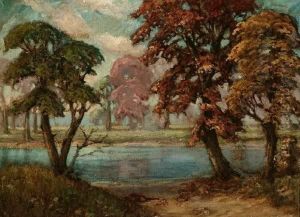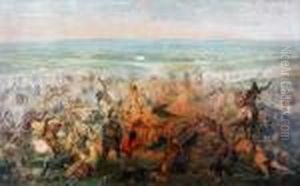F. Otto Becker Paintings
F. Otto Becker was a German artist known for his contributions to the fields of painting and graphic art in the 19th century. Born in Leipzig, Germany, in 1839, Becker was part of a period that saw significant transformations in the art world, influenced by movements such as Romanticism and later Impressionism. Despite these changing tides, Becker developed a unique style that incorporated elements of realism and detailed observation, making his works distinctive and memorable.
Becker’s education and artistic training were rooted in the strong German tradition of craftsmanship and technical skill. He studied at various prestigious art institutions, where he was exposed to both classical and contemporary art forms. This education allowed him to master a range of techniques, from oil painting to etching, and imbued his work with a sense of precision and depth. Becker was particularly noted for his landscape paintings and cityscapes, which often captured the beauty and intricacy of natural and urban environments with a remarkable sense of realism and atmosphere.
Throughout his career, Becker was an active participant in the German art scene, exhibiting his work in galleries and shows across the country. His contributions to graphic arts, especially in the form of etchings, were also significant, demonstrating his versatility and skill across different mediums. Becker's artworks were well-received by his contemporaries, and he garnered respect and recognition for his ability to convey the essence of his subjects with both clarity and emotion.
F. Otto Becker passed away in 1903, leaving behind a legacy that has continued to be appreciated by art historians and collectors alike. His works are part of several important collections and museums, showcasing his enduring impact on the world of art. Becker's dedication to capturing the world around him with such fidelity and detail has made him a notable figure in the history of 19th-century German art, remembered for his contribution to the realism movement and his skillful depiction of both natural and man-made landscapes.

